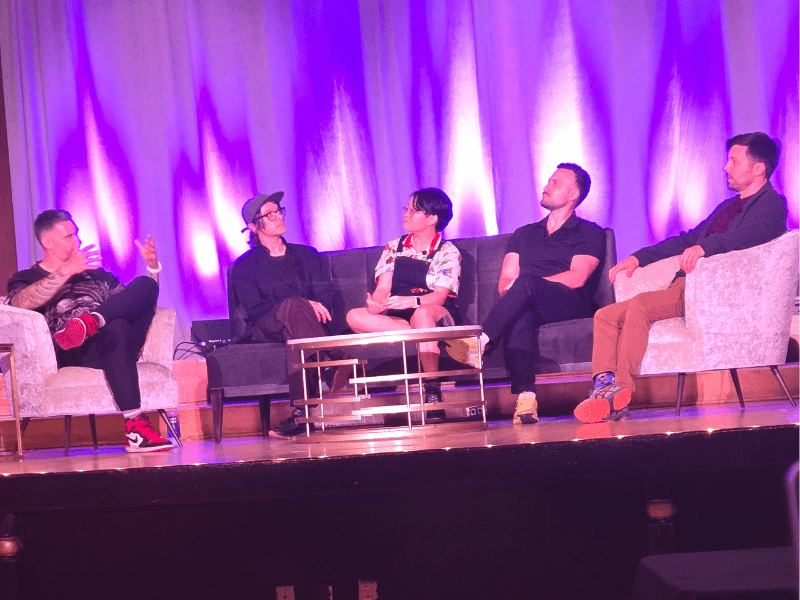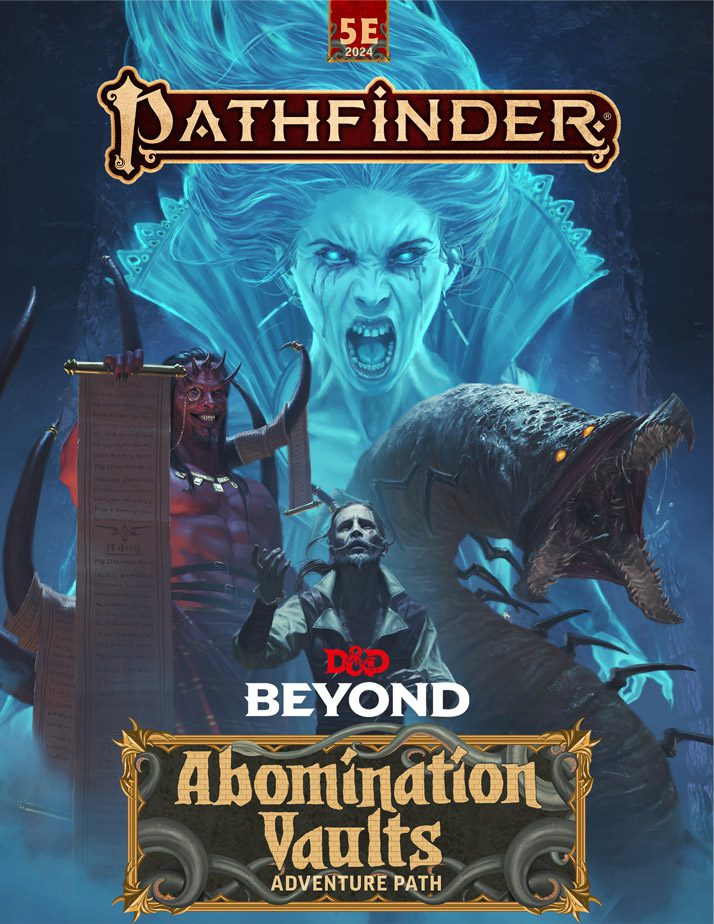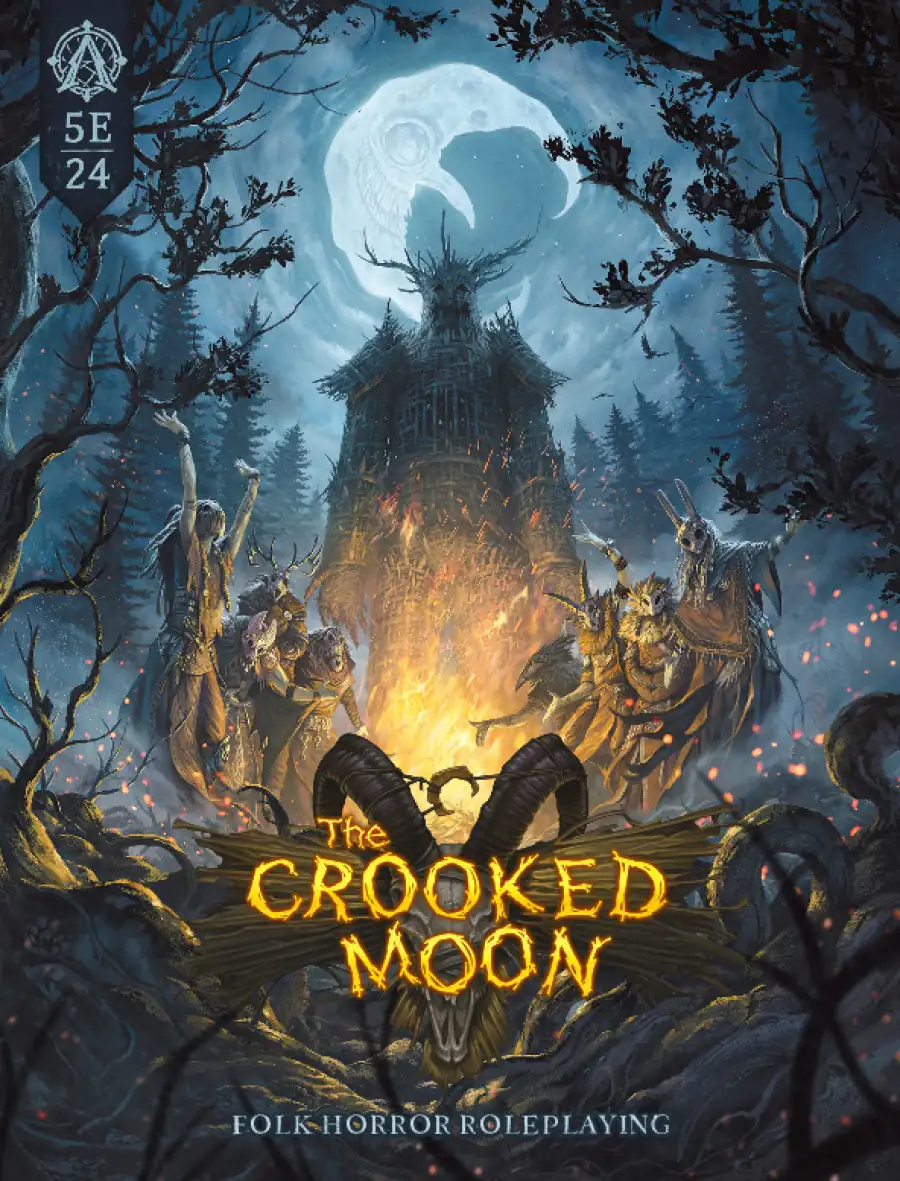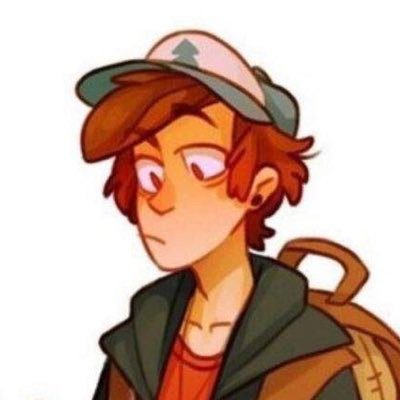It’s been an up and down few years for Dungeons & Dragons, as a company and as a brand. Big brand wins like Baldur’s Gate 3 and the release of the “5.5” sourcebooks were contrasted with controversy, increased competition from major players like Critical Role and MCDM, and the departure of the franchise’s guiding lights Jeremy Crawford and Chris Perkins. With a full creative shakeup and a new pair of hands at the helm in Dan Ayoub, D&D went into Gen Con with a hope for a fresh start.

A big part of the “new” Dungeons & Dragons has been the opening up of the D&D Beyond platform to brand new partnerships. Long a home for both 1st party and homebrew content, the digital platform has started to host adventures from companies that, historically, you’d never have expected to link up with the Wizards of the Coast juggernaut. Alongside new content from Kobold Press and AAW Games you also can now see Cthulhu By Torchlight from Chaosium and, in one of the bigger shockers of Gen Con, The Abomination Vaults Adventure Path from Paizo. The main architect of this more open D&D Beyond ecosystem is Laura Hohman, Product Architect for Dungeons & Dragons. After work with Dreamworks, Nickelodeon, and two and a half years in the world of Magic the Gathering, Laura has spent the last seven months managing the partnerships, new and old, that D&D has made a core part of their strategy. We got a chance to pick her brain a bit and see just what this process looks like at every level.
What’s it been like helping shepherd this more open D&D Beyond and working with these third party publishers?
It’s been really rewarding for me personally. I come from the LA art community. I’m a huge artist, creator, advocate. Seeing people be able to spotlight their content on D&D Beyond and really integrate it with their tools and having it be usable by anyone and everyone has been a super cool experience to see. The kind of growth that provides to creators and the excitement it brings to the fans and the players to easily access that and maybe see that and have that sort of visibility that they want to have known that product is the basic support for.

So we had the Chaosium team here this week, now we have Paizo. Both are not necessarily D&D companies. Were those relationships or discussions that were happening before you got into the role, are these ongoing?
I was involved with the team of ensuring that the collaboration was as strong of an offering on D&D. D&D Beyond has limitations within its tools, it was created for 5E, that’s the whole framework of it. Our team is called the Lorekeepers, just a great thematic name. They’re the ones who really bring that content into our tools and suggest ways to better optimize or make better player experiences. Paizo and Chaosium were the best partners. They were so happy and willing to collaborate and tweak things here and there to just make it as smooth of a process as possible. But I really am excited to see other kinds of cross collaboration. So people on our end who might be curious about that now can kind of dip their toe into those worlds and it’ll hopefully lead to more people being excited about those products. And vice versa as people from Call of Cthulhu or Paizo who want to dip their toes into 5E.
Where Chaosium is making content for Wizards of the Coast, could we be seeing, for example, Wizards of the Coast creating collaborative content within Chaosium’s ecosystem?
I can’t speak to anything outbound. It’s just not my job. But inbound, it’s very much been what we can control. My job is to bring cool content to D&D Beyond. So those are the kind of things I target. I’m a huge lover and advocate for genre content. I’ve played Call of Cthulhu several times. I’m a big other TTRPG fan. And I think really providing that elder horror kind of vibe is something that we don’t really have a lot of. So one of the things that I’m looking at with the roadmap is trying to find different thematic products and different tones of content that we currently don’t offer and bring that in to create kind of a more diverse marketplace so fans can find different stuff that they want to play and it’s there for them.
This is a fascinating subject to me because of D&D’s status in the industry and the kind of the toy box that is D&D not being as open as it is now. I’m curious what the conversations are like bringing in these companies?


D&D has had its its history, and it’s made its fumbles. But I do really think that the team we have now is super open and super committed to driving that sort of transparency and collaboration forward with the entire community, not just the 5E community. So I think with Paizo, that really shows that we’re trying to work together. When it comes to sourcing and talking to potential partners or creators interested in coming in at the end of the day, our current framework is that we need to have something that looks like 5E because that’s all we can support. Some people are more comfortable with that than others. Some people want to retain more of their core mechanics that our tool sets just can’t integrate. So then we have to those conversations about what’s the best player experience for the person who wants to buy this. Do it. If we can’t support half the product in our tools, is that OK? And what does that mean? So we have a pretty open collaborative conversation about it, evaluating each other’s work and walking through their content — what it does and can and can’t do.
Then we come to agreements of what is that thing we’re going to put on D&D Beyond specifically. We’ve been doing these player packs which are more small drops of a class with subclasses. So if we can’t support the entire product then is there something in this we can really support and make cool so that there’s still a collaboration?
Are you involved in the the VTT side of it, can you give us any info on the Maps rollout and integration?
I do work closely with the BT Team team make sure we’re on the same page with Maps becoming open. I think it’s something that all of us are really excited about that I can say at least from my end. Currently there’s not a lot of hunger for adventure content but I feel like maps being open will allow for a lot more people to play adventures because it makes it more accessible and easier now that it’s not behind a paywall, people can just do it. I think it’ll definitely make all of our products simpler and more “click and play” for people. I’m hoping to see more people want to interact with that.
Can you talk about the process of getting that integration? Let’s say I’m Avantris, for example, and I want to bring Crooked Moon into the system. Is that a situation where they’re having to code and make all the technical changes? Or is it more like they hand you a PDF, it’s your team, and then your team is the one who creates and generates the content.

So currently we have more of a “white glove” service. So what happens is the partners provide us with a PDF of their stuff, whether it’s in progress or complete, just depends on when we start working together. Either way, we will start reviewing it, making sure that it is rules that we can support, things that we can support in our tools. They will kind of bounce back and forth and maybe negotiate certain things of like “yeah we can’t support this”, “can we tweak it”, or “can we make these feats or backgrounds into special mechanics or new species”. So kind of tweaking it, slightly, so that we can make it a better user experience in our tools. But after that, it’s mostly internal.
Our team will take an InDesign file and just propagate all of that in order to create it into our systems and create the compendium and all the other assets that you get when you purchase a product. So it’s very collaborative in the beginning and then it tends to be more handing it off to our team. Our team will integrate and update and create content. We’ll have a review phase to make sure it’s all accurate, Our tools were made for our goal set. So once you start adding new mechanics or new things onto your character sheet, it’s kind of limited as far as what we can do, at least automated. Sometimes we can support things and say, OK, you do it this way, more of a homebrew way. But again, it’s all kind of just a trade-off that we have a very open discussion about to see if they’re comfortable and if we’re comfortable with what that means.
Images via Dungeons & Dragons
Have strong thoughts about this piece you need to share? Or maybe there’s something else on your mind you’re wanting to talk about with fellow Fandomentals? Head on over to our Community server to join in the conversation!


